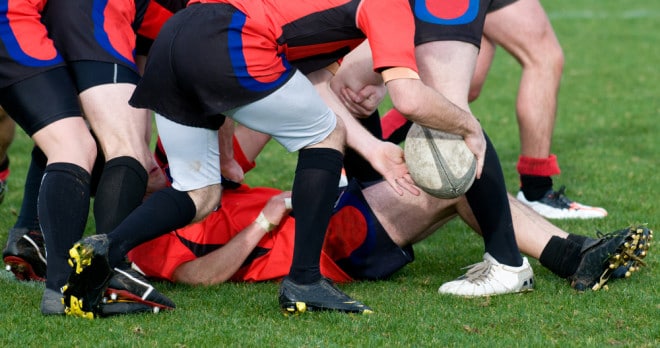Head injuries in rugby: the silent epidemic

In early March, a feature length documentary “Head Games” was premiered in the UK. This film depicts the perceived “concussion crisis” that is haunting rugby and other contact sports.
Why is it happening?
Whilst contact sports such as boxing, American football and rugby have always carried a risk of head injury, over the last 20 years, the injuries have become more serious.
This is because players are on average more than 1 stone heavier than they were 20 years ago and that the force of a hit can be the equivalent of what a body would experience during a car crash.
The injuries
Many people may believe that a head injury in rugby is caused by a single blow to the head during a game. Although this has sometimes been the case such as with Gloucester player Andy Hazell in August 2013, the more concerning cause can be the effects of repeated blows to the head during an individuals sporting career.
Although an individual may appear to only suffer a minor concussion on the field, neurologists have warned that repeated blows to the head can cause the degenerative brain disease Chronic Traumatic Encephalopathy (CTE).
CTE can cause memory problems, slowed movement and a personality change and, concerningly, it does not usually materialise until middle age, when a sporting career is usually over.
Although CTE has long been recognised in American football, last year, Australian rugby union player, Barry “Tizzer” Taylor died aged 77 following a battle with dementia caused by CTE and it seems he is not the only one. “New Scientist” reports of another rugby union player’s brain being shown to have CTE following his death and the likelihood is more players will present with the condition.
What is being done to help?
Although protocols are in place to help rugby players recognise the signs of a concussion, the current protocol “pitch side concussion assessment” (PSCA) allows players suspected of suffering concussion to return to the game just five minutes after the injury, providing a medical inspection clears them of concussion.
While this policy has come under much scrutiny over the months since it was introduced, the International Rugby Board states that this is an improvement on the previous policy. As players are now properly assessed away from the pitch, only 13% of those with a concussion return to the game. This is in stark contract to figures obtained for previous protocols where it was reported that 56% of players who had a concussion returned to the match.
Whether this goes far enough to prevent concussion in rugby and to educate players and coaches of the risk remains to be seen.
As personal injury solicitors, we see the often devastating effects a head injury can have on an individual and their family. If you have been affected by a injury of this type, call us on 0800 923 2068 or email [email protected] for sympathetic yet pragmatic advice.